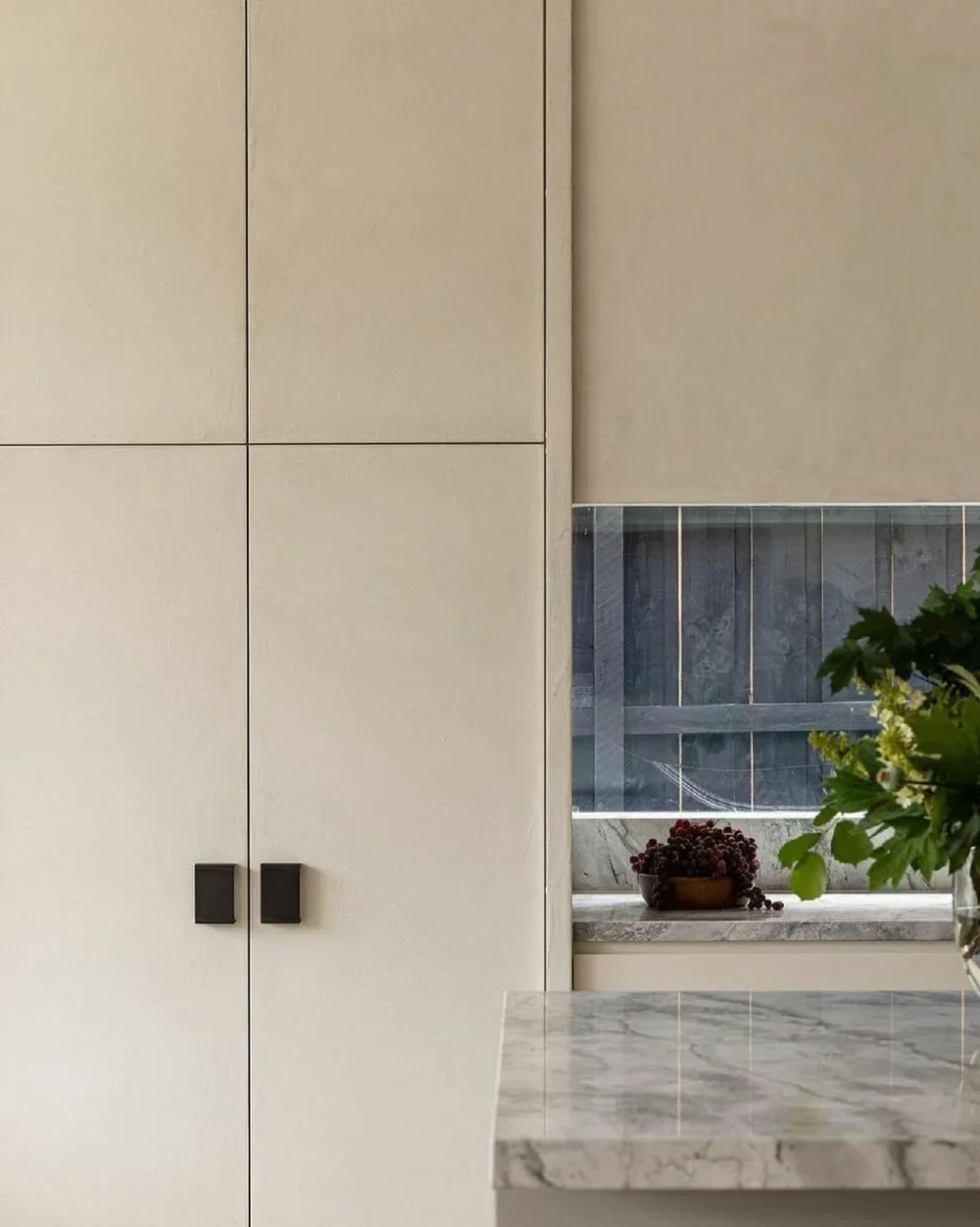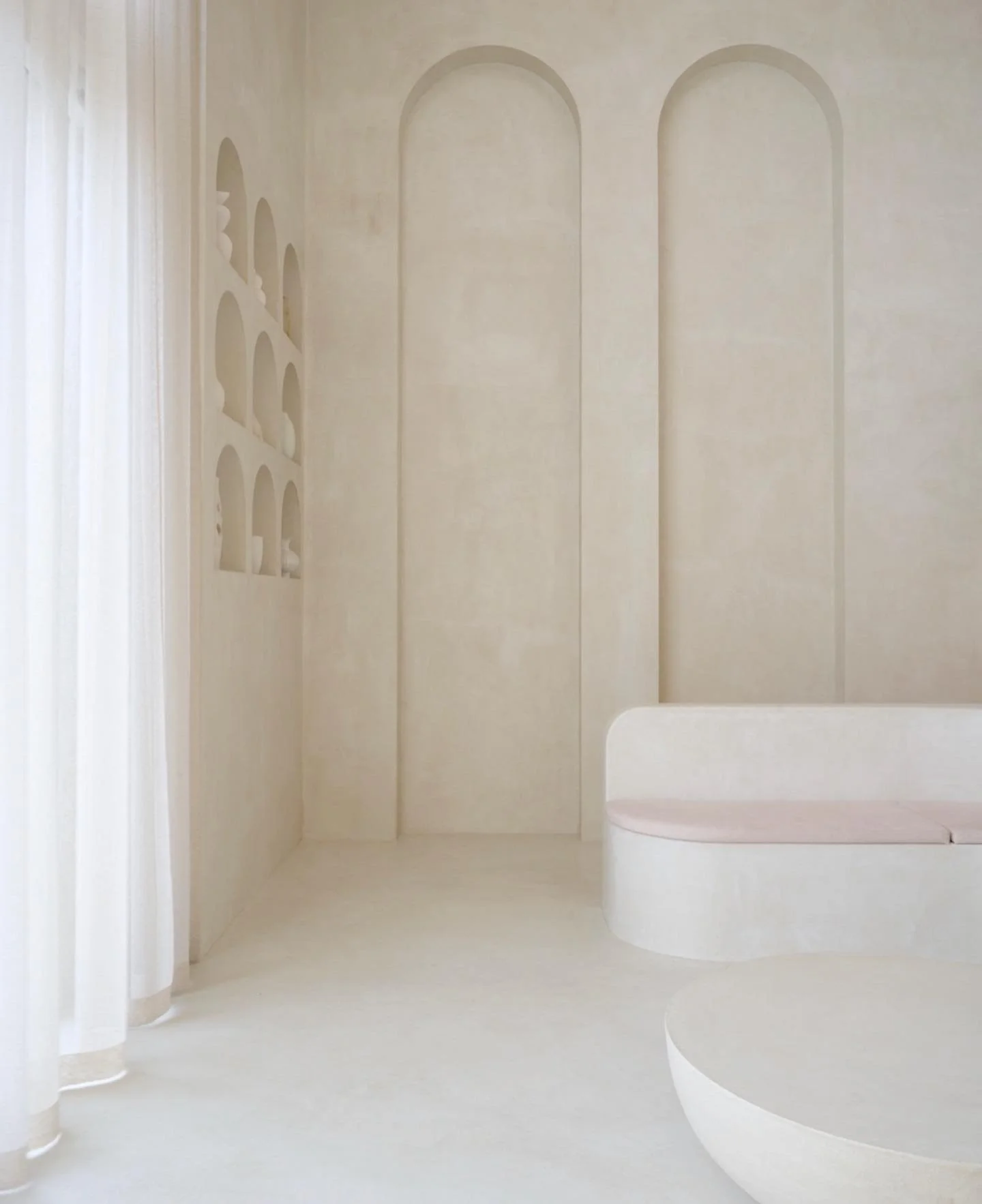Microcement Guide 2025
Microcement has become one of the most exciting materials in modern architecture and interior design — in 2025, we were involved in more projects around Australia than ever. With its seamless look, tactile appeal, and versatility in application, microcement is transforming how designers, architects, and homeowners think about surfaces.
At Seamless Overlays microcement suppliers, we’ve been part of countless bathroom renovations, flooring upgrades, commercial fitouts and more Australian projects calling for a modern, minimalist aesthetic that balances luxury with practicality — and endless creative potential. In this guide, we’ll unpack:
What microcement is
Where and how it’s used;
Why this durable, decorative finish is so popular, and;
Why X-Bond is the best microcement on the market!
Learn More: Microcement Hub
X-Bond Microcement Floors and Walls: Manly House by DKO Architecture
What Is Microcement?
Microcement — also sometimes called microconcrete or microtopping — is a cementitious coating applied in thin layers by hand over existing surfaces. Once sealed, it forms a hard, durable, and completely seamless finish suitable for floors, walls, ceilings, and furniture.
Unlike poured concrete, microcement doesn’t require thick layers or expansion joints. It can be applied over substrates such as tiles, old concrete, plaster, and even wood, making it ideal for renovations where you don’t want to remove the existing surface.
This combination of aesthetics, function, and adaptability makes microcement a go-to finish for designers chasing a modern, architectural aesthetic without major construction. There are plenty of microcement products on the market. Our product X-Bond was the first of its kind when we first brought it to Australian clients in 1999.
Key Features of X-Bond Microcement:
Minimal thickness of just 2-3mm
Can be used indoors or outdoors*
Waterproof system that’s resistant to mould and stains*
Customisable in colour and texture
Works with underfloor heating
Strong adhesion to a wide range of substrates
CodeMark certified for waterproofing and other key performance standards
*While our X-Bond system includes full resistance to UV, water, and extreme temperatures, not all microcement formulas are. That’s why it’s really important to choose a formula that is tried and tested for your application.
Learn more about X-Bond Microcement and enquire about your project here.
The Rise of Microcement: Why It’s Trending in 2025
While we’ve been supplying and installing microcement for 25 years, its popularity has boomed in the past decade as design trends shift toward minimalist lines, earth tones, and textural materials. Microcement — with its neutral colourways, smooth continuity, and inherent tactility — is the perfect finish for these contemporary aesthetics. In 2025, we’re seeing designers using microcement in to create warm, layered spaces that are uncluttered yet sculptural, feeling at once both contemporary and timeless.
Not only that, but overlays are a great way to satisfy the need for sustainability, durability for lower maintenance, and convenience for both residential and commercial fitouts.
Why it’s trending:
Demand for low-maintenance materials
Fast, mess-free hand installation bypassing demolition
Rise in seamless, minimalist finishes for interiors and exteriors
Growth of sustainable building products
Aesthetic alignment with luxury design
Read More:
5 Reasons Why Home Owners Are Switching to Microcement
Are Microcement Bathrooms The Next Big Trend?
Why Microcement Is So Popular In Retail Design
Microcement Applications: Where It Works Best
One of microcement’s greatest strengths is its versatility. It can be used in virtually any space, residential or commercial, and on nearly any surface.
Microcement Bathrooms and Showers
Not every microcement is suitable for wet areas; but the X-Bond system achieves a waterproof finish suitable for the entire bathroom — including floors, walls, vanities, and even inside the shower or bathtub. It eliminates grout lines for an easy-to-clean surface, reducing mould growth and creating a sleek, continuous look. Chances are, you’ve seen microcement bathrooms in your favourite design publications and award-winning projects around Australia.
Microcement Kitchens
Used on benchtops, cabinet faces, splashbacks, or floors, microcement adds texture and warmth to modern kitchens. Its textural finish also hides smudges better than glossy tiles or glass. Compared to stone, it’s a more impact-resistant benchtop finish and is easier to create custom joinery shapes. You can even apply X-Bond to your kitchen rangehood! You can read more about microcement kitchens here.
Floors, Walls, Ceilings and Joinery
The best thing about microcement is that, due to its hand application process, installers can trowel it onto both vertical walls and horitzonal surfaces like floors and ceilings.
In fact, the most common application for microcement is floors. Suitable for high-traffic areas, microcement flooring is often specified in office buildings, retail environments, and residential projects. Large, open-plan spaces benefit from the seamless aesthetic, using microcement flooring to connect different areas (from meeting rooms to reception areas, living spaces to dining) for a unified design.
X-Bond at Hideaway House
Commercial Spaces
From shopping centres and retail boutiques to universities, corporate offices and restaurants, microcement balances beautiful bespoke design possibilities with durability in high-use environments.
Its non-slip finish and resistance to foot traffic make it ideal for commercial flooring, while the ability to customise color and texture also allows brands to create cohesive, immersive spaces that reflect their identity — from industrial concrete greys in urban offices to soft neutrals displaying luxury labels. Microcement’s seamless finish also supports hygienic design standards, making it a smart choice for health and wellness clinics or beauty salons that require both aesthetics and practicality.
X-Bond Microcement Floors & Wall at the Law Institute Victoria
Exterior Surfaces
While traditionally used indoors, microcement is now being applied in outdoor settings thanks to new UV-resistant sealers and enhanced weather durability. It can be used to resurface patios, garden paths, pool surrounds, flat rooftops, balconies, and exterior walls/facades for a cohesive indoor-outdoor aesthetic. The seamless texture ties together interior living spaces with outdoor entertaining zones, perfect for the Australian lifestyle where alfresco design is key.
When properly sealed, exterior microcement stands up to moisture, sun exposure, and temperature fluctuations — maintaining its integrity year-round.
Microcement Finishes and Colours
In the X-Bond range, we have a wide selection of standard shades and four different texture options achieved with various techniques — so you can tailor it to any design style.
X-Bond Finishes:
X-Bond Luma: Our most popular finish, troweled with visible markings and then sanded for a smooth, monolithic feel.
X-Bond Blade: For external floor applications, applied with a blade to create raised chatter marks for slip resistance.
X-Bond Mineral: A bumpy stucco-like wall finish (or anti-slip floor/ramp) applied with a spray gun.
Natural Concrete: A feature wall finish that mimics raw concrete with an irregular, pockmarked texture.
Our colour palette favours earthy neutrals and grey — beige, greige, stone, and sand — but our bolder tones like charcoal and brown are on the rise for statement spaces. We can also create custom shades for projects over a certain size.
Installation Process: What to Expect
Professional application is key to achieving a flawless result with X-Bond. We don’t supply it for DIY as the process involves multiple steps and products — X-Bond is a system, where all components work together to ensure unmatched durability.
Surface Preparation: Cleaning and priming the existing surface, including restoring any damage. This is the most important step! An overlay is only as reliable as its subtrate.
Base/Prep Coats: Applying the required prep layers, such as a reinforcement mesh or screed (if required) and a two-in-one waterproofing/anti-fracture membrane.
Mixing The Product: X-Bond is a multi-part system comprising stone aggregate, adhesive polymer-liquid, and colour pigments; all mixed together before application.
X-Bond Coats: For trowel applications, two layers are required for the decorative finish.
Sealing: A non-negotiable, sealing protects the surface against stains, moisture, and abrasion.
Each project takes approximately 3–5 days, depending on size and complexity. The result is a surface that looks handcrafted yet performs like high-end engineered flooring.
Want to learn the process? If you’re a renderer, plasterer, concreter or similar you can attend our microcement training course to start offering X-Bond to clients.
Our one-day X-Bond Microcement course is perfect for surfacing professionals who are looking for a trusted, superior, and versatile microcement to offer their clients. In this comprehensive one day course, you’ll learn:
The installation methods for each X-Bond finish (X-Bond Luma, X-Bond Blade, X-Bond Mineral & X-Bond Natural Concrete)
How to install our Liquid Waterproof & Anti-Fracture Membrane
Different substrate preparation methods
How to calculate materials for quoting projects.
On completion of the X-Bond Course, you’ll have access to our online ordering system, resource portal and ongoing technical support. With growing demand for our products and installers, we funnel leads to regular customers for more visibility.
Learn more about our Microcement Training Course.
Durability and Maintenance
How durable is microcement? Microcement is extremely resilient when correctly installed and sealed. Its sealed surface is non-porous, so spills and splashes don’t penetrate — making it ideal for kitchens, bathrooms, and other messy areas. It also resists wear and impact, making it a low-maintenance floor finish for commercial cleaning teams and busy homeowners.
Maintenance tips include:
Clean regularly with a neutral pH cleaner — or just water will do!
Avoid abrasive cleaning materials or harsh chemicals — a soft cloth or dust mop is best.
Low- or high-pressure washing equipment can be used externally.
Some liquids (for example nail polish remover, citrus, urine, oil) need to be removed as quickly as possible.
Unlike natural stone or tiles, microcement doesn’t require grout replacement or polishing. While timber demands regular sealing or oiling, and can stain or warp if exposed to moisture, microcement stays consistent with minimal maintenance. A simple neutral cleaner — and very occasionally a reseal — are all that’s needed to keep it looking new.
We have more detail in our Microcement Maintenance Guidelines.
Microcement vs. Concrete (and other materials)
| Feature | Microcement | Concrete | Tiles | Polished Plaster |
|---|---|---|---|---|
| Thickness | 2–3mm | 50–100mm | 8–12mm | 2–4mm |
| Application | Over existing surfaces | Requires pour | Requires removal | Trowel-applied over some substrates |
| Durability | High | Very high | Moderate | Moderate |
| Style | Seamless, high textural variation & customisation | Seamless, industrial | Structured with grout lines | Seamless, subtle texture |
Read More:
Microcement vs. Concrete: What’s The Difference
Everything You Need to Know About Tile Resurfacing
What’s The Difference Between Microcement and Venetian Plaster
Microcement Pricing: What It Costs in 2025
As microcement suppliers, we don’t quote installations. Pricing of an installation will encompass more than just the cost of the microcement itself. Factors that influence your quote include:
Substrate preparation required
The area of application
Dimensions
The specific finish chosen
Location and travel
An applicator will provide an all-encompassing quote based on your project specifics. Learn more about the factors that influence pricing.
For an example — based on a job with a minimum of 100 square metres over concrete, using a high-quality finish like X-Bond — costs typically start from $200 per m2 for floors, $250 per m2 for walls and $500 per m2 for joinery.
We can help you find an installer in your area to get a quote.
CodeMark Certification
CodeMark is an accredited, government-backed certification scheme that provides assurance a product complies with the National Construction Code (NCC) of Australia.
It’s a mark of reliability for contractors, designers, and their end clients — ensuring the proiduct meets or exceeds standards in waterproofing, fire safety, and other areas without the need for extra engineering sign-offs and technical justification.
To achieve CodeMark, our product underwent rigorous testing by independent third parties. X-Bond is now one of the only microcement systems that is CodeMark certified, with proven deemed-to-satisfy compliance wet area performance.
While CodeMark is beneficial broadly, this is especially relevant for large commercial builds and public works, or projects requiring streamlined approval — supporting faster consent or inspection pathways.




















